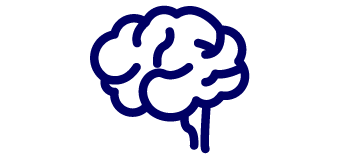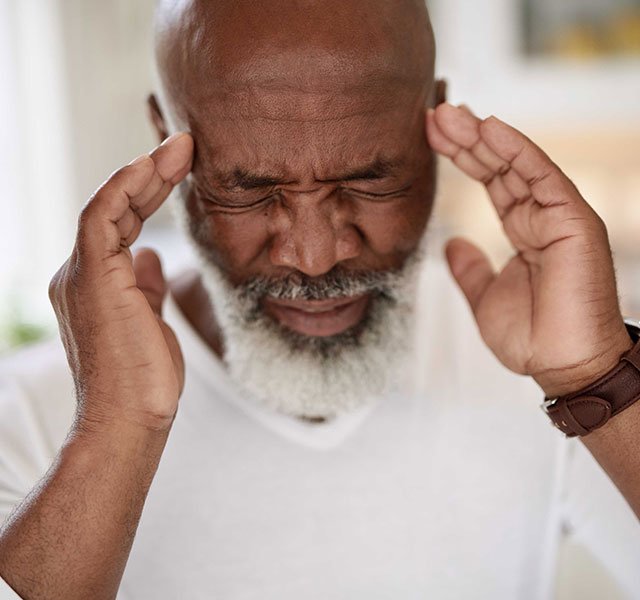At some point, just about everyone has experienced the pain and frustration of a headache. But for an ailment that affects nearly everyone at any age, headaches—and the best ways to treat them—still aren’t fully understood.
“We don’t know 100% why one person gets, say, a migraine headache, and someone else doesn’t,” says Dace Zvirbulis, M.D., a neurologist with Henry Ford Health. “We do know, though, that a migraine is a genetic neurologic disease. Patients with migraine headaches have a brain that is more sensitive and susceptible to environmental changes, which can trigger a migraine attack.”
Neurologists divide headaches into two categories: Primary headaches and secondary headaches. Primary headaches, which make up 90% of headache cases, are recurrent, non-threatening headaches that are not due to any other cause. Secondary headaches are those caused by a separate medical condition.
Understanding The Most Common Primary Headaches
There are many factors that can lead to a headache. Little things like being hungry, overexerting yourself or not getting enough sleep can all be possible triggers. Sometimes a headache can come on without a straightforward cause. Here are some of the most common primary headache types:
Tension headache
Characterized by mild to moderate pain, a tension headache typically affects the whole head, though many feel tightness or pressure specifically in the forehead. They typically last anywhere from 30 minutes to a few days, but the pain is rarely so severe that people cannot go about their daily lives.
- Symptoms: Tightness in the forehead. Dull head pain.
- Triggers: The number one cause of tension headaches is stress, followed by changes in weather.
- Treatment: Rest. Relaxation. Meditation. Over-the-counter medication such as acetaminophen or ibuprofen. If tension headaches become more frequent, daily preventive medication can help decrease frequency.
Migraine
The vast majority of headaches that doctors treat are migraines—intense, throbbing, oten debilitating headaches that usually affect one side of the head. To date, a migraine is understood to be a disorder of the brain. They affect about 12% of the population and are three times more common in women than men. Some people who get migraine experience a "migraine aura", or symptoms that appear before the headache pain sets in.
- Symptoms: Moderate to severe pain. Sensitivity to light and sound. Nausea/vomiting. Vision problems. Numbness or tingling in the arm, leg or one side of the face. Occasionally speech problems. Simple activities such as walking or going up the stairs can make symptoms worse.
- Triggers: Stress. Weather changes. Hormone changes. Food or drink (aged cheese, processed meat, alcohol, MSG). Lack of sleep. Dehydration or skipping meals. Migraines are also known to be genetic, so if someone in your family gets frequent migraines, you may be likely to get them as well.
- Treatment: Rest. Relaxation. Meditation. Medications to treat acute migraine attacks and also to decrease migraine frequency. There are also FDA approved devices available for migraine treatment.
Cluster headache
Cluster headache pain is often severe and disabling, like migraine headaches. The biggest difference between the two is that cluster headache pain is centralized around the eye.
- Symptoms: Restlessness. Tearing of the eye. Runny or stuffy nose. Droopy eyelid on the side of the head with pain.
- Triggers: Unknown, though alcohol and tobacco use make a cluster period worse.
- Treatment: Administering oxygen inhalation can be the quickest way to quell a cluster headache. Medication such as oral steroids, nasal spray, injectables and some FDA approved devices can also help.
Hemicrania continua (continuous headache)
Hemicrania headaches typically involve one side of the head and may appear as multiple episodes a day—anywhere from 5 to 40 episodes, lasting for about 2 to 30 minutes each.
- Symptoms: A one-sided headache that can recur daily and last for months or years.
- Triggers: Unknown.
- Treatment: Hemicrania headaches tend to respond only to one type of anti-inflammatory medicine: Indomethacin.
Finding The Root Cause Of Secondary Headaches
Headaches that are the result of a medical condition can have different degrees of severity that may require immediate medical attention. For example, a headache caused by a concussion or brain tumor need to be treated right away. Secondary headache types include:

Sinus headache
When your sinuses become infected, congested or inflamed (sinusitis), it can lead to a sinus headache.
- Symptoms: Pressure or dull pain in the forehead, face or behind the eyes associated with thick yellow or greenish nasal discharge and fever.
- Triggers: Seasonal allergies. Structural issues in the sinuses that trap mucus such as a deviated septum or nasal polyps.
- Treatment: Decongestants can help swelling of sinuses go down. Using a saline nasal spray or rinse can help flush blocked sinuses. Applying a warm compress can loosen mucus.
Post-traumatic headache
These secondary headaches appear within seven days following a head injury or after losing consciousness. They may take several months to completely go away.
- Symptoms: Dull head pain. Dizziness or lightheadedness. Memory issues. Sometimes vomiting or nausea.
- Triggers: Head injury that resulted in loss of consciousness or a concussion.
- Treatment: Rest. Medications may be recommended to manage pain. Physical therapy can be helpful to reduce symptoms.
Medication-overuse headache
These headaches, also known as rebound headaches, are caused when pain medications are used long-term to reduce headache pain. These headaches, which often occur for more than 15 days out of the month, are most common in people who experience tensions headaches and migraines.
- Symptoms: A headache that comes back even after taking medication. Often worse in the morning and present throughout the day.
- Triggers: Overuse of pain medications used to treat headaches including opioids, triptans, acetaminophen and nonsteroidal anti-inflammatory drugs (NSAIDs).
- Treatment: Stopping medication use. Changing medication type or exploring non-medicated relief for headaches.
Thunderclap headache
Many people describe thunderclap headaches as the worst headache they have every experienced. While these headaches often only last for a short time, they are often caused by a serious brain bleed or stroke.
- Symptoms: An extreme headache the appears suddenly. Nausea or vomiting. Can result in seizures or extreme confusion.
- Triggers: Ruptured blood vessel in the brain. Stroke or blood clot in the brain. Bleeding within the brain.
- Treatment: Call 911 immediately if experiencing symptoms. Because of the severity of conditions associated with this headache, seeking care immediately is of the upmost importance. Treatment is dependent on the cause of the headache, which doctors can evaluate once at the hospital.
Headache related to a spinal fluid leak
A cerebrospinal fluid leak (CSF leak) occurs when spinal fluid escapes through a hole or tear in the dura mater, the outermost layer of the membranes (meninges) that cover the brain and spinal cord. The most common symptom of this leak is a headache.
- Symptoms: A headache that worsens when sitting or standing and improves when lying down. Neck stiffness, nausea, and changes in hearing or vision.
- Triggers: A CSF leak can occur due to trauma, a surgical complication or spontaneously without a known cause.
- Treatment: It's important to seek medical attention if you suspect you may have a CSF leak, as it can lead to serious complications if left untreated, such as meningitis. Treatment varies depending on the cause and location of the leak and may include bed rest, increased fluid intake, caffeine, blood patches (when your blood is injected into the spinal canal to clot and create a patch covering the CSF leak), and in some cases, surgery.
While it can be difficult to determine the seriousness of a headache, it’s important to monitor your symptoms and the frequency with which they occur.
“If you’re experiencing a headache more than three times a week, if headaches do not respond to the treatment, if they are getting more frequent or feel different from the previous headaches, it’s time to consult a doctor,” Dr. Zvirbulis says.
Reviewed by Dr. Dace Zvirbulis, a neurologist who sees patients at Henry Ford Hospital in Detroit and Henry Ford Hospital West Bloomfield.



